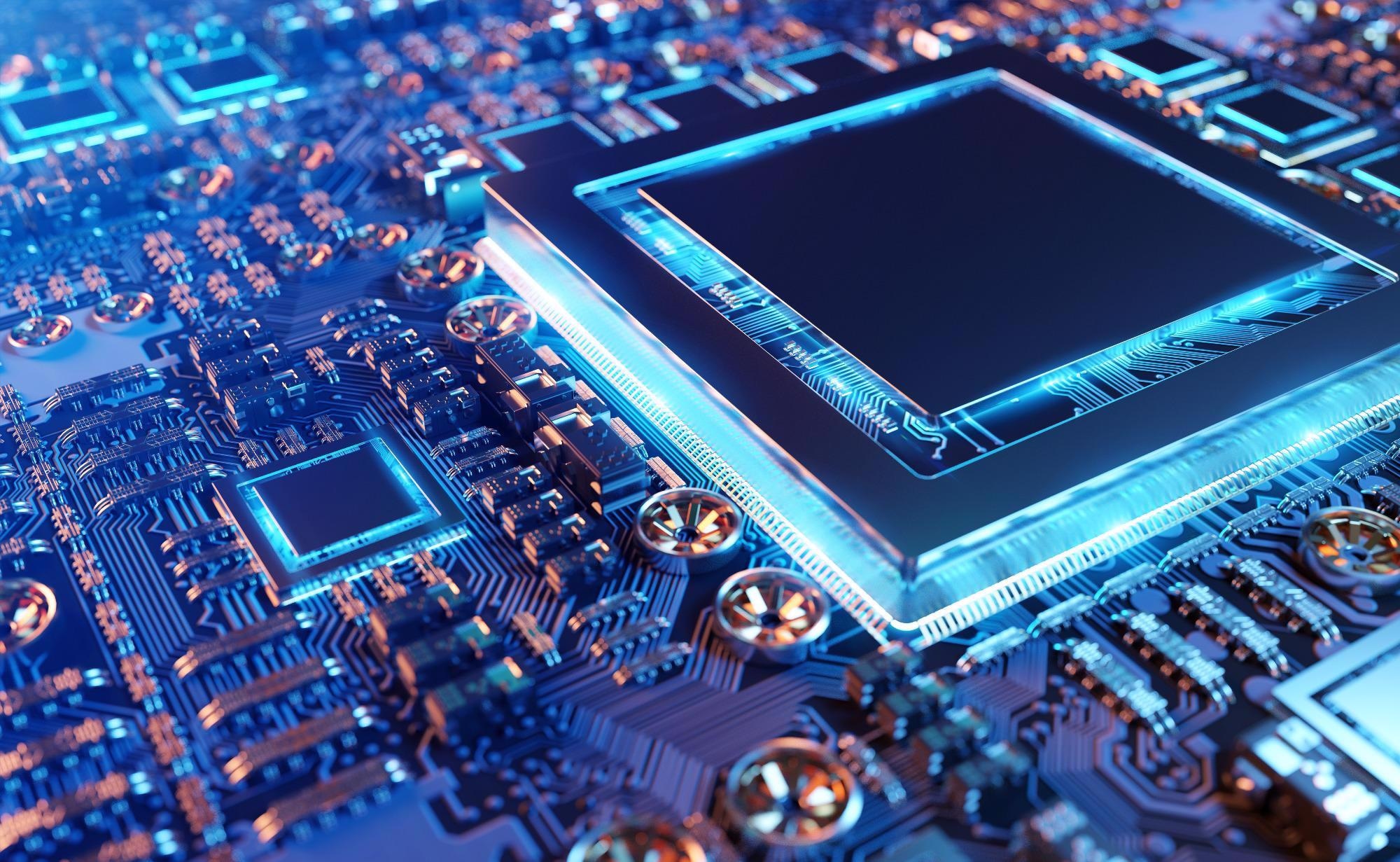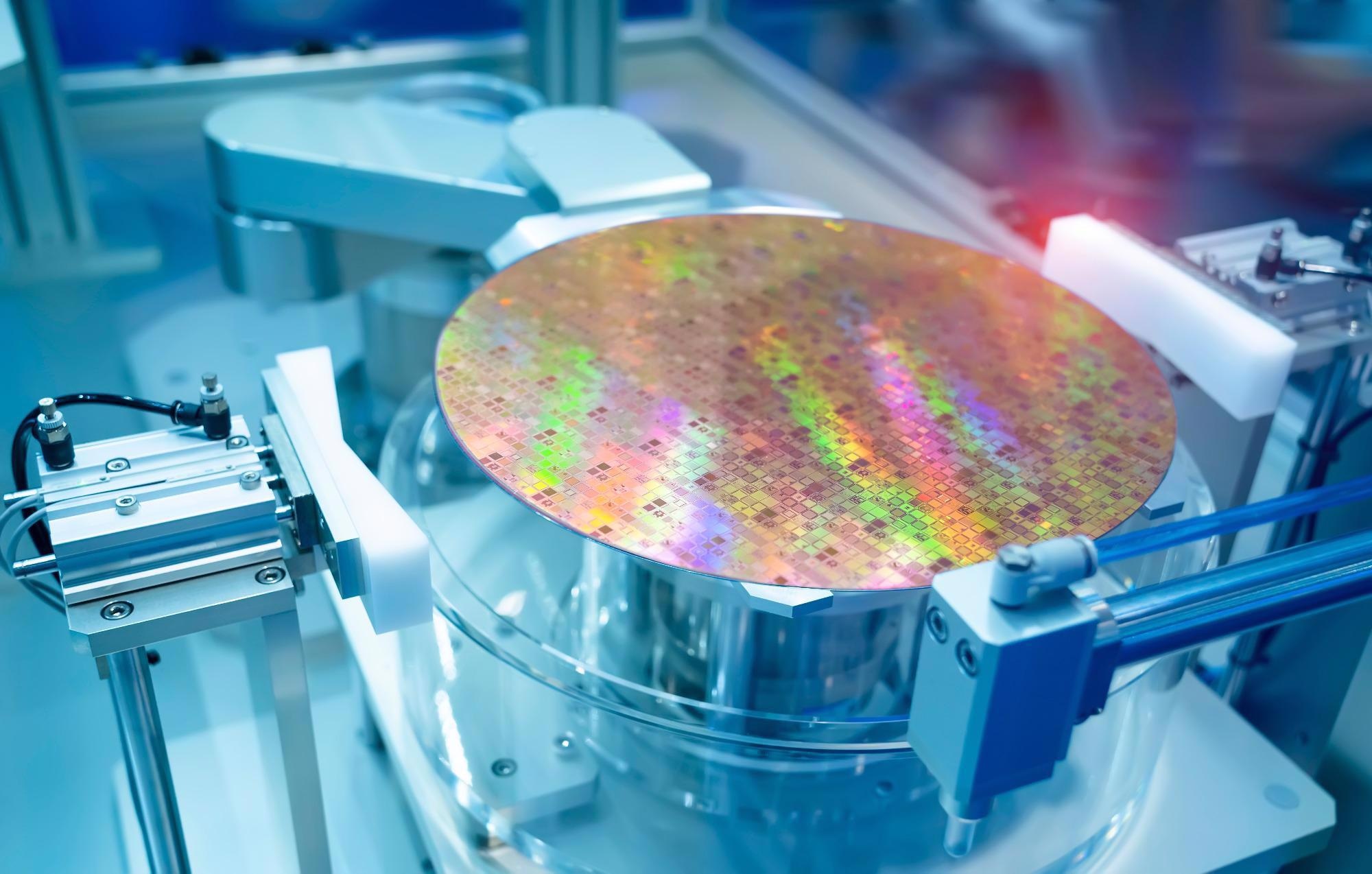In this interview, AZoNetwork speaks with Angus McFadden, Semiconductor Technology Manager, Kelvin Standifer, Director Semiconductor Business Unit, and Paul Cuddyer, Sales Director, at Technetics Group. They discuss the future of the semiconductor business and how COVID-19 ushered in a new industrial revolution for electronics.
Can you tell us about your role as the Semiconductor Technology Manager at Technetics and what that entails on a day-to-day basis?
Angus McFadden: I am the point man on discovery of new and emerging technologies. We have a development team that works across all AST platforms
As part of our semiconductor initiative, I work with them to pull together our capabilities to target specific products, nodes, or markets within the semiconductor industry.
There have been several evolutions in advanced node technology. Could you tell us more about those advancements?
Angus McFadden: There has been a continuous shrinking in terms of node size and line width. At Technetics, we are now working with three nanometer-wide nodes for some of our customers.
Eventually, we will reach a physical size limit, so three or even two nanometers might be where advanced manufacturing hits a wall until there is some new material development.
In addition to this shrinkage, the industry has been working on stacking or packaging wafers on top of each other to achieve greater functionality in a unit area. This has become a significant driver in advanced node manufacturing and a huge source of added value. We are seeing a combination of both technologies at the moment.

Image Credit: sdecoret/Shutterstock.com
How have advancements in industries like gaming and cell phone technology been pushed and developed?
Angus McFadden: Gaming has taken advantage of new technology, and this industry is driving it because they have a thirst for connectivity and networked gaming. It used to be you, at home alone on your PlayStation, but now players are online with their friends or using AR or VR.
Gaming is now high definition, high speed, realistic and immersive. That demands a lot of computing power, a lot of memory, a lot of bandwidth, and all of the demands tie into semiconductors.
Cell phones are the portal to the world now. People buy and sell, get an education, and even play games on cell phones. Companies are now making gaming cell phones with high-resolution screens and higher refresh rates.
The demand for more portable devices with longer battery life is driving this shrinking technology. To extend battery life, you have to shrink the technology to provide the same functionality with less power consumption. These advances are critical to these handheld devices becoming more functional.
What changes do you see occurring in manufacturing right now?
Angus McFadden: There is a fast-paced growth market for us in manufacturing and in general because of the trend towards smaller node sizes and smaller line widths. There is a significant change in the materials used, leading to increased sensitivity to contamination.
This requires precise monitoring and in-depth cleaning. We see people measuring contamination in terms of atoms per square centimeter, looking at 30, 50, or 100 atoms as a contaminant. It used to be the case that we talked about dust or metal particles that were five and six microns in size, but now we are looking at this on an atomic level.
Thanks to this cleanliness requirement, there have been several necessary advances to get to these smaller node sizes from a material and services standpoint. The precision and the investment required to achieve these specs and be repeatable have become onerous for integrated device manufacturers (IDMs).
IDMs no longer have in-house cleaning - they aggregate their business with larger companies specializing in cleaning because of the cost.
There has to be strict confidentiality in this kind of arrangement. We develop programs and processes for customers, and many people feel comfortable working with us because we are insular from the rest of the world.
How do you see this market continuing to grow throughout 2022?
Angus McFadden: The cleaning, coating, refurbishment (CCR) and service-oriented market grows exponentially. Last year, it was around a 500 to 700 million dollar business, but I would estimate its market size at more than a billion dollars this year.
The market will grow because there is a thirst for more capacity and more technology. As you go down in wafer size, the number of cleaning and refurbishment cycles increases because of the criticality.
Our market is a great market to be in. It is a competitive market, but our technology is good, and we continue to innovate. The future is very bright for everyone in this space, and I think we will be a key leader in this market.

Image Credit: asharkyu/Shutterstock.com
What evolutions have resulted from these shifts in cleaning, coating, and restoration?
Angus McFadden: In CCR, as you go down in node size, contamination, material, and dimensional issues on parts become more critical. For example, if you have a part with several holes in it, like a showerhead, the size of the showerhead and the size of the hole are important because they affect the flow.
Therefore, it is important to clean that part in a way that does not affect the dimensions of the part.
With newer technologies, it is often necessary to remove materials directly from their surface. We have processes where we can remove one nanometer of material from the surface of a part. This demand is becoming more prevalent, and we have some interesting enabling technology to facilitate this.
Angus McFadden: From the customer’s perspective, the parts are expensive, and the dimensions are critical, so it is important to keep those parts in service for as long as possible while maintaining their dimensions.
How has the COVID-19 pandemic affected the semiconductor market?
Angus McFadden: I would hazard a guess that demand has accelerated faster than expected because of COVID because everybody was working remotely, requiring connectivity and bandwidth.
COVID has steepened the ramp. People wanted the technology now, whereas it was previously looking at around five years before this level of connectivity would have been possible.
COVID has driven this trend towards more devices and more data to be crunched. This cycle will not end because the future is increasingly about information, edge computing, data collection, and doing something meaningful with that data to monetize it.
I think COVID has accelerated this whole new industrial revolution, if you will, for electronics.
Paul Cuddyer: The pandemic has truly changed everything. The semiconductor industry has benefited greatly from people needing to work from home. I recently read an article that said since 2020, each year, laptop computer demand has risen by 50%. Semiconductors are becoming part of the fabric of people’s everyday lives, and I think this will continue.
Kelvin Standifer: In 2019, the industry at the top level was a down year for us. We expected 2020 to be flat or down slightly, but when the pandemic hit and people started working from home and needed computers, the kids needed gaming systems, etc., so we saw an increase in the industry.
Last year, in 2021, there was another increase of 25% year-over-year growth. This year there is about 10% anticipated growth for the industry. All these factors combined lead to an increase in demand for chips.
Angus McFadden: The pandemic saw automotive companies back off on orders because they thought sales would go down, but it went the other way. They canceled orders, and non-automotive companies used that capacity.
Then, when the automotive companies returned, the capacity was not there. General Motors, Daimler, and Volkswagen are in a crunch, and while that is only around 6% of the market, it’s a growing market that caught the automotive industry flat-footed.
However, they are being proactive today and working on solutions to make sure that does not happen again.

Image Credit: aPhoenix photographer/Shutterstock.com
Is there any evidence to suggest that automotive companies are bringing semiconductor manufacturing in-house to avoid these supply shortages in the future?
Angus McFadden: General Motors specifically announced that they were doing this, and I think it had been misconstrued because they are now collaborating with foundries to design with a TSMC and develop a chipset for their automotive content.
In the past, they would buy around different 300 devices from multiple suppliers, and now they are trying to streamline that process and develop custom devices. It is difficult for an automotive company to own a wafer fab because they need such a high volume of wafers.
General Motors has also signed a deal with Qualcomm, which is fabless but has a new Snapdragon three-chip set for autonomous driving.
Around 40% of the cost to build a car is in electronics. By 2030, this is expected to be 45%. Manufacturers have to manage that cost to maintain profitability. They have been smart about it. Instead of installing a giant circuit board with 100 chips on it, they are moving towards custom multifunctional devices that can be programmed.
Kelvin Standifer: Automotive manufacturers are trying to control things where they can. When there was a shortage, and their suppliers could not provide the chips needed for their cars, there was not much they could do.
It makes sense for them to design chips specifically with TSMC and ensure that they have the capacity needed to maintain chip production in the future, but they may not have the skill set yet. I expect they will get the right people on board as we move forward.
Kelvin Standifer: The shortage of chips for automotive manufacturers and the increased demand during the pandemic has led to so much new capacity coming on board across the world, or at least being announced.
Most of the manufacturing and expansion is in Asia, but we see a lot in the United States, including new fabs being announced for Intel, TSMC, Samsung, TI, Micron, and GlobalFoundries.
How far do you see this increase in capacity going, particularly in the United States, and what impact do you expect this to have on the market overall?
Paul Cuddyer: I am very excited about the increase in capacity, personally. I have worked in manufacturing and sales for a long time. Typically, what used to happen is you would develop a prototype and get the R&D technology incorporated, but it would always be shipped overseas for manufacturing.
If you look back at when America prospered, it was when we were manufacturing domestically. Intel announced a $25 billion investment in Arizona for a new facility, another $20 billion facility in Ohio, and TSMC coming here. Our next generation is going to be producing more engineers and manufacturing more. I feel like it is a good time for the economy in general.
Angus McFadden: To some degree, this is also driven by some geopolitical pressure from the Far East. If you look at the US as a nation, we do not have a solid technical partner for critical infrastructure, telecom, communications, and defense.
I think Intel is going to fill that void by building capacity. The two factories they are building in Arizona will be foundries, acting as a secure partner for the US government and the military-industrial complex.
By getting into the foundry game, Intel will be able to offer an integrated solution with their new packaging technologies, including a microprocessor, memory, and logic, even making them a viable alternative to TSMC and Samsung.
Intel has just announced it is buying steppers from ASML, looking at two nanometers, which is quite a leap for them.
Do you anticipate the supply chain being impacted by this increase in capacity? Will it need time to adapt?
Angus McFadden: Historically, TSMC has been classed as the gold standard because they have built up a lot of capacity. They have the permits and land to set up a functioning fab in around 30 months.
Today, there is not enough steel to create the necessary frames, and the supply chain for semiconductor capital equipment is pressured to run as fast as possible.
While Intel and TSMC are building in Arizona and are pushing as hard as they can, getting up and running in that 30-month window is going to be tough because the supply chain - in general, not just for semiconductors but for construction, insulation, and concrete - is currently very tight.
Kelvin Standifer: We know there is a shortage and the automotive manufacturers have talked about when we can get over the shortage. It is hard to know when we will see this shortage resolved, but with the number of fabs coming on board in the United States and Asia, we are bringing a lot of capacity into the market.
We should be able to get over the supply chain hurdle in the next year, allowing the industry to better support the number of devices that we talked about with semiconductors being everywhere.
Where do you see the semiconductor industry going next?
Angus McFadden: I do not think there will be any overcapacity in these new fabs because the demand for semiconductors continues to grow. For example, General Motors are building their new electric vehicle factory, meaning that their need for semiconductors will increase exponentially – not just for control systems but also for power control.
High-performance computing, cloud computing, data centers, the metaverse, AI, and AR consume massive amounts of data, bandwidth, and computing power. That demand is not going away, certainly not for at least the next ten years.
Paul Cuddyer: Companies tend to be relatively conservative in terms of investing in expanding capacity, but the industry’s growth over the last two years will give companies the confidence to make those investments quickly before they are left out.
There is a race to support this overall industry growth, and I think that will shorten how long it takes these fabs to come online. There is always an upcoming technology to facilitate growth, and I think the market is in a good place.
Kelvin Standifer: An article in World Semiconductor Trade Statistics mentioned the expectation of growing into a $600 billion market in 2022. The market was at the $400 billion level about five years ago, so this is serious growth. Even a conservative CAGR predicts the market to reach a trillion dollars by 2030.
Angus McFadden: From the perspective of semiconductor capital equipment, we are now seeing four or five companies spending 90% of the CapEx in the industry. This used to be a lot more, but the market has condensed, and the forecasting is much more accurate. They are not competing against another company to win business, which has become much more stable.

This information has been sourced, reviewed, and adapted from materials provided by Technetics Group.
For more information on this source, please visit Technetics Group.
Disclaimer: The views expressed here are those of the interviewee and do not necessarily represent the views of AZoM.com Limited (T/A) AZoNetwork, the owner and operator of this website. This disclaimer forms part of the Terms and Conditions of use of this website.